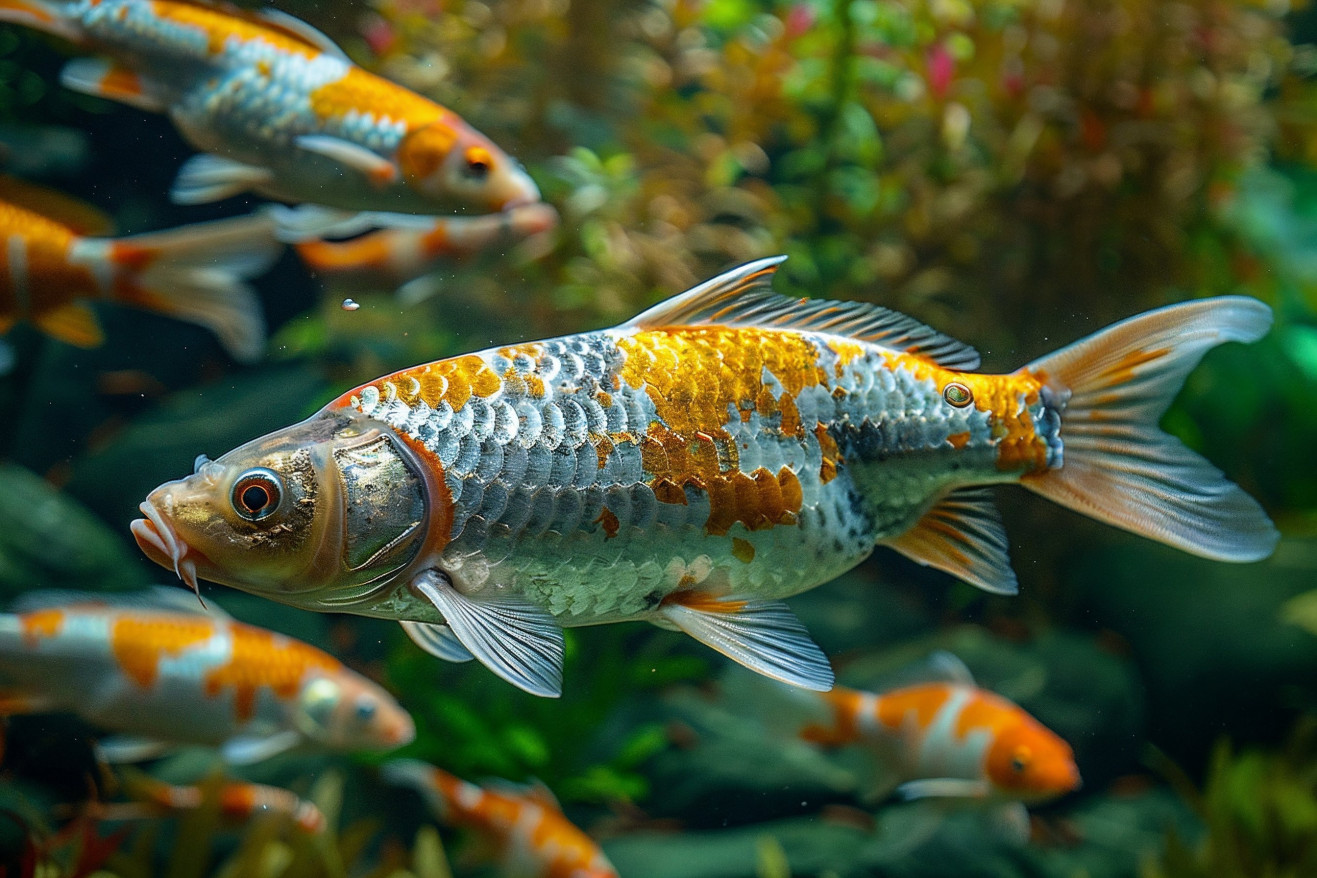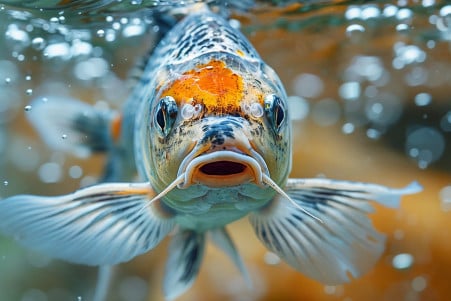How Big Do Koi Fish Get? Genetics, Diet, and More
4 June 2024 • Updated 4 June 2024

If you have a koi pond or keep koi in an aquarium, you may be wondering how large these beautiful fish can grow. Koi are a type of carp and, as a result, can grow to be quite large. In fact, the largest koi on record was more than 3 feet long and weighed over 70 pounds! That said, most koi kept in ponds and aquariums will grow to be between 18 and 24 inches long.
In this article, we'll explore the work of marine biologists, aquaculture researchers, and koi enthusiasts to determine the genetic, environmental, and care-related factors that determine how big koi will grow. By looking at research and drawing on the expertise of koi enthusiasts, you'll also find out how to ensure your koi reach their maximum size while also ensuring their overall well-being.
How big can koi fish get?
Genetics and Breeding for Maximum Size
Genetics and selective breeding are the most important factors in determining a koi's maximum size and growth potential. For example, the traditional Japanese koi varieties known as Gosanke are bred for larger sizes and can grow to be between 22-26 inches long. Meanwhile, the special Jumbo Koi variety can grow to be over 36 inches long and weigh more than 26 pounds, demonstrating how much size can be achieved through selective breeding.
A koi's size is largely determined by genetics and the selective breeding practices of the koi breeder. As Kodama Koi Farm notes, the term "Jumbo Koi" is used to describe koi that are at least 24 inches long, with some growing to be over 40 inches long and the largest ever recorded at an All Japan show being 38 inches.
While all koi have the potential to grow to impressive sizes, it's important to note that the right environmental conditions are necessary to help them reach their full genetic growth potential. Water quality, nutrition, and space are all important factors in helping these beautiful fish grow to their full genetic size over time.
Water Quality for Large Koi
One of the most important factors in growing large koi is water quality. Pond Haven explains that koi need well-oxygenated water with a consistent temperature between 68-75°F to grow to their full potential. Jumbo koi need a large pond with a minimum of 1,000 gallons and a depth of at least 3 feet.
Living Water Aeration lists filtration, aeration, and regular water changes as ways to keep waste from building up and keep water quality at optimal levels. On the other hand, overpopulating the pond and letting the water quality decline will lead to stunted growth and health problems for koi, as explained in A Complete Guide to Koi Pond Maintenance.
Nutrition for Growing Jumbo Koi
Of course, good nutrition is important for any koi, but it's especially important for jumbo koi that are being grown out. According to the K.O.I. organization, koi need a high-quality, high-protein diet that contains at least 35-38% crude protein. The Koiphen.com forum goes on to say that the best growth results are seen when koi are fed at a rate of 2% of their body weight per day.
In addition to their regular diet, supplementing with live foods, vegetables, and treats can add variety and additional nutrients to their diet, as noted in POND Trade Magazine. High-quality koi foods, such as those offered by Kodama Koi Garden, are made with high-quality ingredients like fish meal, spirulina, and fresh wheat germ to support the overall health and color of jumbo koi.
Health Issues and Disease Prevention for Jumbo Koi
Because of their size and increased metabolic demands, large koi are more prone to certain health issues and diseases. Koi Disease Diagnosis and Treatment - Hydrosphere explains that bacterial infections such as ulcers, fin rot, and mouth rot can result from poor water quality or stress. Meanwhile, parasitic infections from anchor worms, costia, ich, and flukes are also common and need to be treated immediately according to Blue Ridge Koi & Goldfish and Next Day Koi.
To prevent these issues, it's important to maintain good water quality, feed your fish a balanced diet, and quarantine new fish, according to Koi Kompanion. Meanwhile, Grand Koi stresses that early detection and treatment are important for treating diseases and preventing them from spreading through a population of jumbo koi. With proper care and preventive measures, jumbo koi can live for many years.
How to Care for Jumbo Koi Over Time
If cared for properly, jumbo koi can live for an average of 25-45 years. Genetics, water quality, food, and disease management all contribute to the koi's lifespan, as explained by Koi Story. Regular maintenance, water changes, and monitoring are all important for the long-term care of large koi, according to Koi Fish USA.
Making sure that koi have enough space and aren't overcrowded as they grow is also important for their care, according to Everything Koi. Keeping koi responsibly means making a long-term commitment to their care and making sure that their needs are met as they grow and age. However, if koi owners are willing to do this, they can help their koi live long, healthy lives.
Conclusion: How Big Can Koi Fish Get?
Koi fish have the potential to grow to enormous sizes, with some individuals reaching lengths of over 3 feet and weighing more than 70 pounds. According to Pond Haven, a variety of factors including genetics, water quality, diet, and care are needed to maximize the growth of jumbo koi.
Genetics are important, and while traditional Japanese koi like Gosanke grow to be between 22-26 inches, the Jumbo Koi variety can grow to be over 36 inches. Meanwhile, Living Water Aeration notes that a stable, well-oxygenated environment with a minimum of 1,000 gallons is necessary for koi to grow to their full potential.
In addition, a diet that includes at least 35-38% crude protein and is fed at 2% of the fish’s body weight per day is necessary for koi to grow to their maximum size, according to K.O.I. and Koiphen.com.
While it may be difficult to get jumbo koi to grow to their full potential, the payoff is worth it for committed koi enthusiasts who want to keep these large, healthy fish. By learning about their unique requirements and making sure to meet them, koi keepers can help jumbo koi grow to their full size and enjoy their beauty for years to come.


